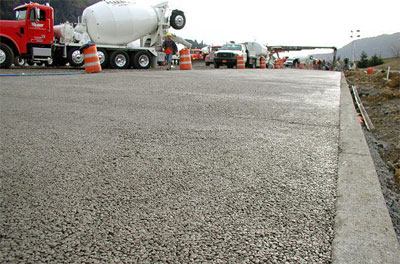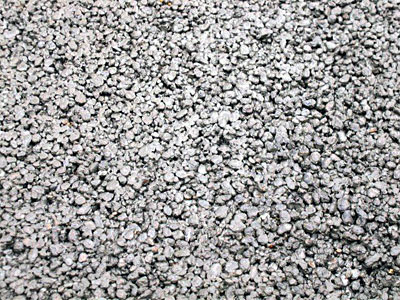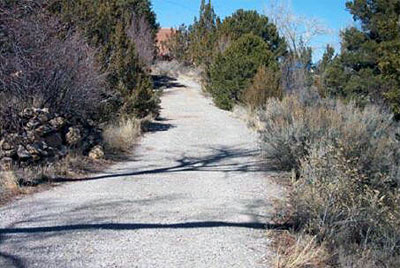Pervious Concrete Pavement
Frequently Asked Questions

Q: What happens to oil that drips on pervious concrete?
A: Several studies have been conducted on the behavior of oil introduced into a pervious pavement system. Findings show that the oil is contained within the pervious system as a coating on the large surface area of the void system and at the location of any geotextile fabric separating the pavement from the subbase or subgrade support. Hydrocarbons, such as oils, are a food source for many naturally occurring bacteria and fungi. The microorganisms feed on the oil and biodegrade it into simpler chemical components that are released into the atmosphere. Research has determined that 97.6 to over 99 percent of oils introduced into pervious pavements are trapped and biodegraded.
Source: PCA. For references, click here.
Q: What about drainage issues in soils with high clay content?
A: Typically, if a soil type has sufficient percolation to support a septic tank system, it will be suitable for pervious concrete. If a soil is truly impervious, the pervious concrete system can still be useful for detention pond requirements. Soil percolation rates are most important if you must meet stormwater quality requirements. A typical parking lot design may have 5”– 8” of pervious pavement on top of a 6”–12” subbase of #57 stone (40% voids) on a geotextile fabric. In sandy areas pervious is placed directly above the sand.
Q: What about clogging?
 A: Clogging problems are mainly an issue of design. If a natural area with grass or exposed soil is allowed to drain stormwater across a pervious concrete pavement, fine material can be introduced into the system causing localized clogging. Vegetative matter can collect on the surface of the pervious concrete causing some clogging, but routine sweeping or vacuuming will restore porosity. Studies have been conducted that indicate pressure washing will restore the porosity of clogged pervious concrete to nearly new conditions.
A: Clogging problems are mainly an issue of design. If a natural area with grass or exposed soil is allowed to drain stormwater across a pervious concrete pavement, fine material can be introduced into the system causing localized clogging. Vegetative matter can collect on the surface of the pervious concrete causing some clogging, but routine sweeping or vacuuming will restore porosity. Studies have been conducted that indicate pressure washing will restore the porosity of clogged pervious concrete to nearly new conditions.
Q: What about freeze-thaw issues?
A: Pervious concrete has been placed in freeze-thaw climates for over 15 years. Successful applications of pervious concrete in freeze-thaw environments have two common design features-- the cement paste is air-entrained, and the pervious concrete is placed on 6–12 inches of drainable aggregate base (¾” or larger clean gravel).

Q: What are some other uses for pervious concrete?
A: Pervious concrete has been successfully used for low-volume streets, driveways, sidewalks, golf cart paths, retaining walls, slope protection, and French drains. It can also be utilized for a variety of paving projects.


